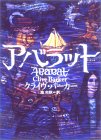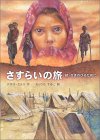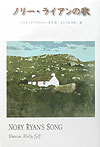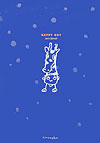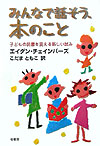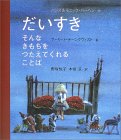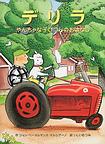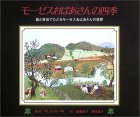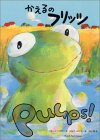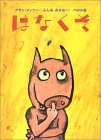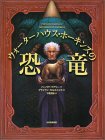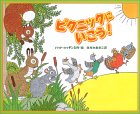Japanese Children's Books
Summer
Edition
Editorial contact: einfo@yamaneko.org
August 10, 2003


Editorial contact: einfo@yamaneko.org
August 10, 2003
| Table of Contents |
|
| Japanese Picture Books | |
| A Long
Loved Favorite |
Sentaku
Kaachan: Washing Mama |
| Recent
Release |
Mahou
no Natsu: Magic Summer |
| **Author
Focus** |
Interview with
Yuichi Kimura |
| Visual Books |
|
| Photographic
Encyclopedia |
Sekai Konchuki: Insects on Earth |
| Publication News |
|
| Recent
Publication Trends |
 |
| "Sentaku
Kaachan" (Washing Mama) written and illustrated by Wakiko Sato 32p, 800 yen, ISBN: 4-8340-0897-5 Fukuinkan-Shoten "Kodomo no Tomo Masterpieces", 1978 Japanese (no English translation available) Native Reading level: 4-8 years Japanese language students: Beginner's level, Hiragana and Katakana only It's a bright and sunny day. Mama, who just absolutely positively loves to do laundry, has decided to give the entire household a good wash. First the curtains. Then the pants, vest and socks, the underwear, sheets and pillowcases. Is that all? Of course not. The dog and cat, and the birds in the birdhouse know what's coming, so they try to get away before Mama can catch up with them. The shoes cabinet, shoes and umbrellas rush out the door in an attempt to escape, but Mama shouts "STOP!" and they're all caught and put into the washing tub. Even that sausage the dog's been trying to eat has got to be clean! Mama hangs up clothes lines crossing the backyard, into the woods and starts hanging everything up to dry. What a sight! Clothes and underwear are certainly nothing new, but a frying pan and pots, a shoe horn and tennis racket?! Yes, they all wind up waving in the breeze, dangling from the clothes line with clothes pins. Frogs and ducks join company, and don't forget the kids, all in their birthday suits, hanging from the lines. And guess who's watching? That's right, it's the Thunder Oni who loves little bellybuttons more than anything else in the whole world. "All those nice bellybuttons lined up for the taking!" he exclaims in glee. Flash! Rumble Rumble Rumble! Making a huge rumpus, he makes his way down to earth, but Mama's not one to turn a hair at such nonsense. She grabs the Thunder Oni by the scruff of his filthy neck and throws him...into the washing tub for a firm scrubbing, where else? And so they lived happily ever...No, wait! There's more to come. She's dynamic and powerful, not the slightest bit fazed no matter what comes her way. Regardless of whatever nature, fortune or God throws at her, she'll deal with it all, a cool smile on her face, no fear. This type of bold and almighty mother figure is perhaps an ideal for many Japanese. One feels sure of being guaranteed a comfortable and safe haven in that big warm chest. The dynamism and humor of this story is fairly typical of Wakiko Sato's distinctive style. Another series widely popular among children is the "BaBaBa-chan Series" by Sato, and features a powerful old granny in the lead role. Although the simple and warmly familiar illustrations are definitely one reason for the popularity of both series, it's probably the nonchalant humor that permeates each and every page of "Sentaku Kaachan" which makes children want to come back to this particular book again and again. Like a fresh bright summer sky, this invigorating picture book has been loved by many children over the years. Just last year, 24 years after this book first came out, a sequel was published. "Kumori nochi Hare, Sentaku Kaachan" (Cloudy Later Sunny, Washing Mama). Wakiko Sato (1937- ) Sato was originally born in Tokyo as Wakiko Takei. She is a member of the CHILDREN'S BOOK ARTISTS SOCIETY (JCBAS) and Children's Culture Research Center. Sato presided over the "Little Museum of Village of Picture"(sic) in Okaya city and Yatsugatake in Nagano Prefecture. After studying design and working for some time as a designer, she later developed an interest in illustration for children. Sato received the first "Picture Book Nippon Award" for "Torikaekko". She has written many books including "Chiisai Nezumi"(The Tiny Mouse), "Otsukai"(Shopping for Mama). "Isogashii Yoru"(Busy Night), "Suika no Tane"(Watermelon Seed) and "Amefuri"(Rain!) are some of the famous titles in her popular "BaBaBa-chan series". She presently resides in Nagano city. Kodomo no Tomo Masterpiece Series Kodomo no Tomo is a subscription-style monthly picture book series available from Fukuinkan-Shoten. There are four series (for children aged 10 to 24 months(board books), 2 to 3, 3 to 4 and 4 to 5 years). This series provides high-quality paperback picture books (Traditionally, most picture books in Japan are never republished in paperback) available at a very reasonable cost (roughly 400 yen per book). Particularly popular and memorable issues, such as Rieko Nakagawa's "Guri and Gura" series, are subsequently published in hardcover form as the "Kodomo no Tomo Masterpiece Series". (Emi Sugimoto) |
Back
to Table of Contents


|
Kaachan and the Image of Japanese Womanhood
***
Mount Fuji, Geisha and
Samurai. Many foreigners still seem to retain these rather outdated
images of Japan. And how about Japanese women? When asked to describe
their idea of the typical Japanese woman, many people answer according
to the traditional stereotype: "Petite and kind, submissive and
unassertive." Obviously much of this image derives from the
"geishas" in the famous operas "Madam Butterfly" and "Mikado".Of course, it is true that grace and modesty have traditionally been considered desirable womanly virtues in Japan. And thanks to the excessively patriarchal trends in the 19th to 20th century, there was a time when women were allowed little, if any say in matters. But even in those darker ages, "Kaachan" was always a big presence in the average household. Not only was she the major labour force of the family, but she was responsible for making sure everything in the household went as it should. She was reliable and strong, and more than anything she was the person to whom everyone would turn to for emotional support in times of trouble. This type of inner strength has clearly remained a definitive characteristic of Japanese women since the age of myth. It has been carried down over the centuries and is still very much active in the modern women of Japan today. It's true that the "Kaachan" image may appear to be the exact opposite of the fainting and submissive maiden commonly described as "Yamato Nadeshiko" but in fact, "Kaachan" fulfils the Japanese ideal of the feminine as much as the "graceful Japanese woman" of folklore. Down to earth, cheerful, strong, with a generous spirit and warm as a bowl of hot miso soup. The Japanese are naturally drawn to this almost nostalgic image of a big and all-encompassing mother. In fact, this may actually be a universal and well-loved image of the mother common to all nations and cultures. |
||
 |
| MAGIC
SUMMER written by Kazue Fujiwara, illustrated by Koushiro Hata 32pp, ISBN: 4-265-03472-1 Iwasaki Shoten, 2002 Japanese (no English translation available) Native Reading level: 5-10 years Japanese language students: Beginner to Intermediate level, Kanji are used, but all have yomigana Summer vacations in Japan are relatively short during primary school. Even so, there's still a-month-and-a-half off from school. Which is a pretty long time. And for latchkey kids in the city, it can get to be a little too long... Here it is, summer vacation at last! But of course, my kid brother and I are stuck at home. We go out every day for a swim in the school pool, then come home to play video games and drink gallons of barley tea. But day after day after day of this, and it gets kind of boring. Mom and Dad have their jobs, so we have to stay at home alone, with the chain firmly on the door. Then one day, a postcard arrives from our uncle who lives in the country. It's his magic words, "Aren't you coming for a visit?" which break the evil spell that keeps us locked up in this tiny apartment. Hurray! Now we can finally have a real vacation. Our plane flies straight into the bright blue skies, right over the billowing white clouds. At the airport, our Grandma comes to pick us up. She lives with Uncle. As we head for his barbershop, all the people we meet on the way ask, "How's your mom?". For some reason, everyone seems to know us. Then we see the red, blue and white twirling stripes of Uncle's barber pole. The morning glory in front of his shop twines its way upward, and seems just about ready to reach the second floor. Uncle steps out of his shop to welcome us and taking one look at us says, "Gosh, look at how pale you two are! We're gonna have to do something about that!" Then, would you believe it? He shaves all the hair off our heads. Before we know it, we've made plenty of friends. All the kids are so deeply tanned here! In the hills, the cicada sing so loud our ears hurt. We climb trees and catch fish. My little brother and I just can't keep up with the rest of the kids. Bitten by mosquitoes, we fall into the stream countless times, and things start getting a little bit uncomfortable. And my brother starts crying. But just then, there's a thunderstorm. Wow! Now I call this taking a shower, Mother Nature-style. We jump around in the rain and suddenly start feeling great again. When we finally get home, all muddy and filthy, guess what's waiting for us. A steaming hot bath and dinner with the whole family. I never knew freshly-picked vegetables could taste so good. That night we're so tired out that we have no trouble sleeping at all. Every day we play outside, eat and sleep. Uncle finds time to take us to the beach and fishing. The sea is so much bigger than a pool, and I swim so much I almost get sick of it. We catch almost 200 sardines! We're having so much fun - and it's every single day. If only we could stay here forever, even after summer's over. But then one day my brother... Reading this picture book is like having a fastball thrown straight at you. From the ice cream freezer at the corner candy store to watermelon seed-spitting contests, to the nostalgic scent of mosquito-repellant incense*1 and the lovely fireworks, "Senko-hanabi"*2.... All of these are experiences which should strike a chord in many of us. These aren't specific to the "rural country scene" which appears in this picture book. Most Japanese presently in their 30's and above should have memories of similar summers. This book is a concentrated container of experiences and scenes which are a part of Japanese summers. Yes, even those places which have now been "urbanized" used to be like the country in this book, only a few decades ago. Time flows slowly - so that adults who have work to do, still have time to sit down for a chat with a child - yes, slowly enough even for that. There are woods which provide a natural cool glade to stave off the heat in the burning hot summer. Because everyone knows each other, children can play safely on their own, even become a little adventurous... At the end of the long summer's day, because they've spent their time with minds and bodies fully active, a child finds himself ravenously hungry and can eat with relish and sleeps deeply at night. By going to the country, these brothers experienced a virtual time-warp into these good old times. In drawing the brothers' faces, Koushiro Hata left in the lines of the original sketch and simply added a little pale flesh-color with waterpaints. As the story progresses, the flesh color gradually gets browner. Their facial features originally start out as mere dots, and gradually grow more expressive and alive over time. After plenty of exposure to the light of the sun, the natural breeze and warm attention from the adults, the result is two healthy children baked dark brown with nice firm muscles which have been put to good use. It would be all too easy to describe this book as an indulgent piece of nostalgia for modern adults. But we're not trying to look backwards. These are all precious experiences which we should try to pass on to the school-aged children of today. This heritage of Magic Summers is an integral part of the hearts of the Japanese. Kazue Fujiwara was born in Matsuyama city of Ehime Prefecture in 1945. She originally practiced as a pediatric neurologist for many years. In 1999 she became the head of the Fujiwara QOL(Quality of Life) Research Institute, and subsequently turned her focus to improving the quality of life of patients with chronic diseases. Simultaneously, she began writing. Fujiwara has written "Oshaberi na Shinsatsushitsu" (A Talkative Doctor's Office) from Kodansha. In 2001, she won the Children's Welfare Cultural Award for her picture book, "Yuki no Kaeri Michi" (On My Snowy Way Home) also illustrated by Koshiro Hata and published by Iwasaki Shoten Publishing. Koshiro Hata was born in Nishinomiya city of Hyogo prefecture in 1963. He's been involved in many artistic aspects of children's literature publication, ranging from book covers to book illustration and has written his own picture books as well. Among the books he's both written and illustrated is the picture book, "Doubutsu Nanbiki" (How many animals are there?) from Poplar Publishing. He's also provided artwork for children's books written by both Japanese and foreign writers, including most memorably, the work of Ulf Stark, "Papa Who Became Small", and "A Genius Liar" , both from Komine Shoten Publishing. (Noriko Otsuka)
|
 1*: The distinct
scent and appearance (see the green spiral GIF at the top of this
review) of mosquito repellant incense is as much a part of
Japanese summers as watermelon. 1*: The distinct
scent and appearance (see the green spiral GIF at the top of this
review) of mosquito repellant incense is as much a part of
Japanese summers as watermelon. 2*: Senkou-hanabi are quietly beautiful fireworks which you enjoy while holding them. (See the GIF animation in the upper left hand corner) The incense burns down to a little orange droplet suspended on the end of a thin stick which you hold downward. If you can manage to keep your hand steady and the droplet intact, it will give off these delicately lovely sparks. Clumsiness or hastiness will cause the droplet to fall and you won't get a pretty display. |

Photographic Encyclopedia
 |
| Sekai Konchuki: Insects on Earth
by Mitsuhiko Imamori, 334pp, 5000 yen. ISBN: 4834001792 Fukuinkan-Shoten, 1994. Japanese (no English translation available) Native Reading level: 5 to adult Japanese language students: Beginner to Advanced. Yomigana are available for all kanji In the cities nowadays, it's become almost rare to come across the wide variety of insects that used to be such a natural part of a child's life. For some time now, insects have regularly come to be sold in cases at department stores and supermarkets(*1). The world has become so unsafe for children that they can no longer go out on bug-collecting sprees in the middle of night by themselves. In spite of all this, the bug-loving child is still far from extinct. And they never will be as long as there are children whose eyes will light up at the sight of an insect encyclopedia like this one. This is the book which I gave to my insect-loving son for his sixth birthday present. Although several years have passed since then, even now, he'll pick up this huge book and become completely absorbed in it. Unlike "Insects of Japan" (translated in France and Germany) which shows Japanese insects taken by the same photographer, this book contains hardly any bugs which he's actually ever seen. These are strange insects from far-off lands my son has never seen. Mysteriously alluring flowers. Bright and beautiful butterflies. Beetles with unique back patterns. The innate wisdom which these insects appear to possess, seems at times miraculous, especially their ability to survive a myriad of environments. The clear color photographs are perfectly capable of telling the stories without the need for a single word. However, brief explanatory notes lend a helpful touch which add depth and understanding to the experience which this book provides. Imamori is a photographer who has been captivated by insects for several decades. The photographs in this book were selected from a huge collection accumulated over nearly twenty years which he had taken all around the world. Although I lack the technical knowledge to judge the quality of the photography, it is clear even to a layperson, that these photos were carefully selected and deliberately chosen for inclusion in this volume. There are pictures which capture a single very rare moment, as well as sequential photos taken over extended periods of time. There are numerous indications which enable the reader to sense and sympathize with the difficulties the photographer must have experienced in order to capture these special moments. But simultaneously, we can share the joy he feels in his art. A setting sun which seems about to melt, serves as the background for the Ducetia Japonica, a type of grasshopper, which emerges in silhouette. A hammer orchid grows a sensuous flower which mimics the appearance of a female bee. These are sights which cause us to gasp in awe. The quality is that of top-class artistic photography. It is easy to see that this is a meticulously-edited book containing a wealth of beautiful color photographs. The quality of these photos is such that it fully boasts Japan's high achievement in this field. The price is admittedly higher than that of the average children's book, but considering the wealth of the content, it's well worth the price. Because it's for children you want to make sure that they get the best quality possible and that they will be getting the real thing. The captions contain plenty of kana (to enable the reading of difficult chinese characters) making it accessible to even the youngest child, but the content has not been scaled down in any way. Any child who's really interested should easily be able to read the descriptions. Even if there are parts which may be too complex for a younger child, a partial understanding should provide enough interest to keep the child absorbed. This is a great way to develop a genuine interest in the sciences. As we observe the photographs of these insects, our interest naturally expands to the objects in the background - to the leaves, the forests, the nature, the foreign lands as well as the people who live in those countries. At key points in the book are photos which depict the lifestyles of the countries they were taken in. A shot which captures the smiling face of a child, further enhancing the readers interest in subjects beyond entomology. There's no need to intellectualize - the simple fact that these very small creatures are struggling with all their might to survive in our huge world sinks into our hearts, touching us deeply. It's a severe, impartial and vast world. My small son will eventually have to step out into this world on his own. And when he does, I pray that in his heart he will have nurtured the warmth and sensitivity to not neglect any small creature, as well as the strength which will enable him to confront the great! * * *
There are other photographic encyclopedias of high quality in this series by Fukuinkan- Shoten, including titles such as "Wild Birds" and "In the Sea". All of these books make a huge impact with their photographs alone, and is likely to appeal to a broad range of ages. Moreover, the creator of this photographic journal, Mr. Imamori has also published some excellent photographic picture books in recent years. Titled the "Hey! Nice to Meet You" series from Alice-Kan Publishers, they include the "Praying Mantis" and the "Pillbug". Taking insects which children commonly come across in their daily lives, and employing a unique way of presenting them, they provide a look into an aspect of insect life which most of us have never seen before. Although these can hardly be called rare insects, the completely different perspective allows readers an entirely new encounter with these insects. The short explanations which accompany the photographs are kept plain and simple. They assist in bringing across the purity of the photographer's curiosity. And it goes without saying that the clear and bright images in this book are again, absolutely excellent. Mitsuhiko Imamori was born in Shiga Prefecture in 1954. In addition to photographing nature in the vicinity surrounding his native Lake Biwa region, he has also travelled to every corner of the earth, capturing it all on film. Imamori has consistently provided outstanding photographic coverage of a single theme: insects and how they interact with nature and humans. In addition to his many photograph collections and photographic picture books, he has also written essays such as "The boys of Satoyama (*2)" (Shinchosha). (Yumi Kikuchi)
|
 Notes:*1:
A common hobby for children, particularly during the summer months, has
traditionally been to capture and raise insects. Most popular are
the rhinoceros and stag beetles. Because of excessive
urbanization and pollution, these beetles can no longer be commonly
captured, so supermarkets and department stores sell them in little
plastic boxes where they can be raised. Notes:*1:
A common hobby for children, particularly during the summer months, has
traditionally been to capture and raise insects. Most popular are
the rhinoceros and stag beetles. Because of excessive
urbanization and pollution, these beetles can no longer be commonly
captured, so supermarkets and department stores sell them in little
plastic boxes where they can be raised.*2: For some beautiful and enlightening information on Satoyama as well as some beautiful photos, check out this NOVA program: "Japan's Secret Garden" narrated by David Attenborough. On the companion website you'll find some of Imamori's work. |
Publication News
Back
to Table of Contents
For various reasons, we have decided
to remove one of the reviews originally published in this webzine.
We would like to apologize to all those concerned. (December, 2003)
We would like to apologize to all those concerned. (December, 2003)
Editor's Note
| Summers
in Japan are particularly hot and humid. Yet we've always found
ingenious (ecological) ways to combat the heat. One unique method
involves cooling down by sharing scary ghost stories with friends and
family. Step into any bookstore in the summer and you'll find the
children's section shelves crammed with yokai (monster) books.
Actually though, the idea that someone can be "chilled to the
bone" by fright isn't merely an expression. Adrenaline, which is
released by your body in response to fear, can lower your body
temperature. So if you decide to try saving on your electricity bills one summer's night, or you're just feeling "green", why not gather 'round, light a candle and cut the bulbs, and see who can tell the best ones. Happy teeth-chattering to you all! (I) |

| Published
by: |
Yamaneko
Honyaku Club |
| Publisher: |
Fusae
Nishizono (Chairman of the Yamaneko Honyaku Club) |
| Planning: |
Yamaneko
Honyaku Club, Staff and Members |
| Editing
and Translation: |
Sako
Ikegami, Kuriko Mori |
| Editorial
Assistance: |
Kyoko
Akatsuka, Sakana Hayashi, Mako Kawahara, Yumi Kikuchi, Reiko Lee, Yuki
Mio, Noriko Otsuka, Emi Sugimoto, Mei Takahashi, Midori Takeuchi,
Toshie Yanagida |
| Cooperation: |
Ono
Sendai, Literary Translation Network Webmaster |
Please
feel free to address your questions and opinions regarding Japanese
Children's Books to
einfo@yamaneko.org.
We
have received express permission to use the book jacket images on this
page from
the respective publishers. With regard to foreign books, our contract
with various
online bookstores
permits us to use those images.
Web images for this page were kindly provided by the following sites: Yuriko and Shizen Ippai
Reproduction of the material on this page,
including all articles and images, is strictly forbidden
 A Long Selling
Favorite
A Long Selling
Favorite  Recent
Releases
Recent
Releases 



